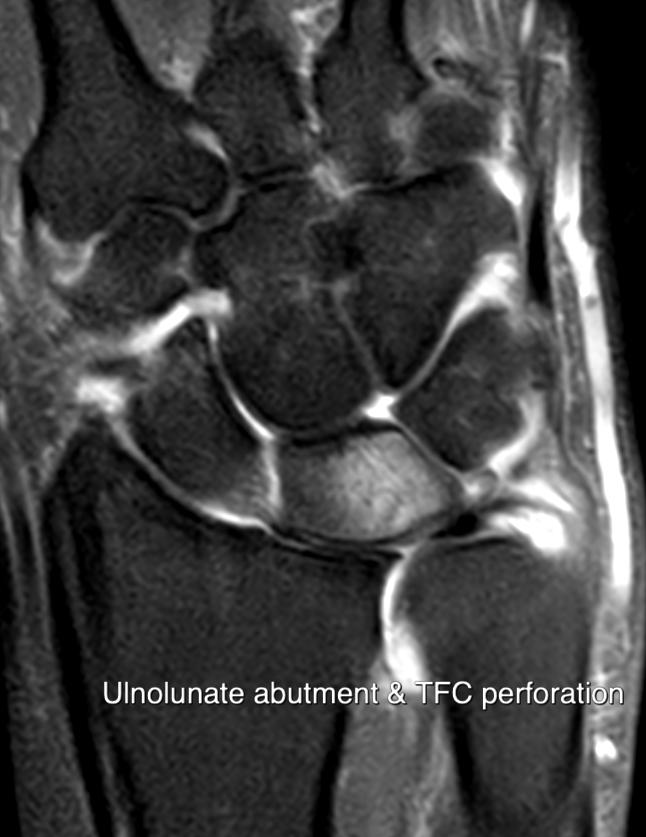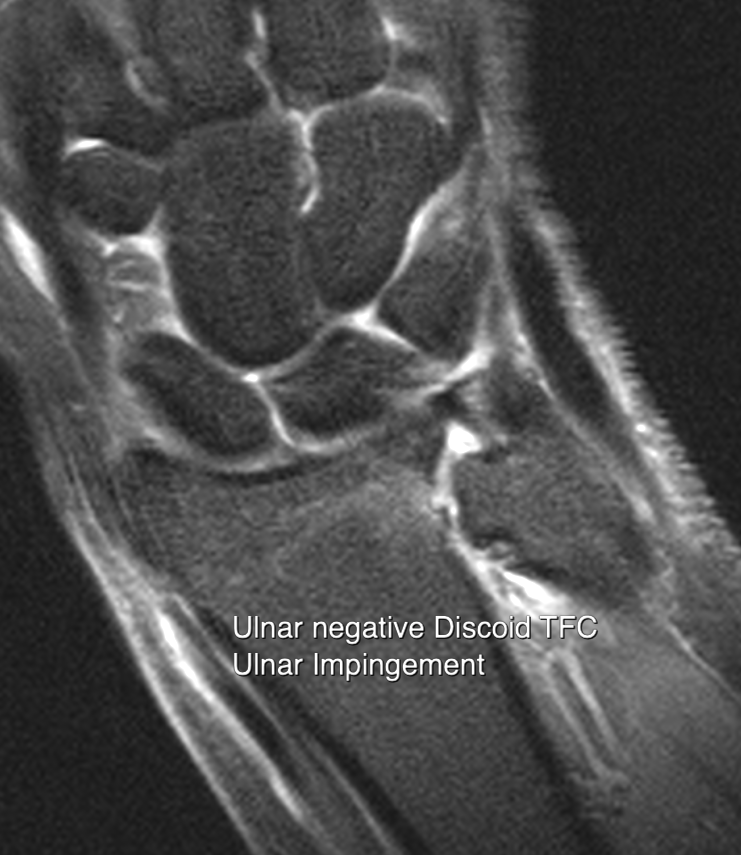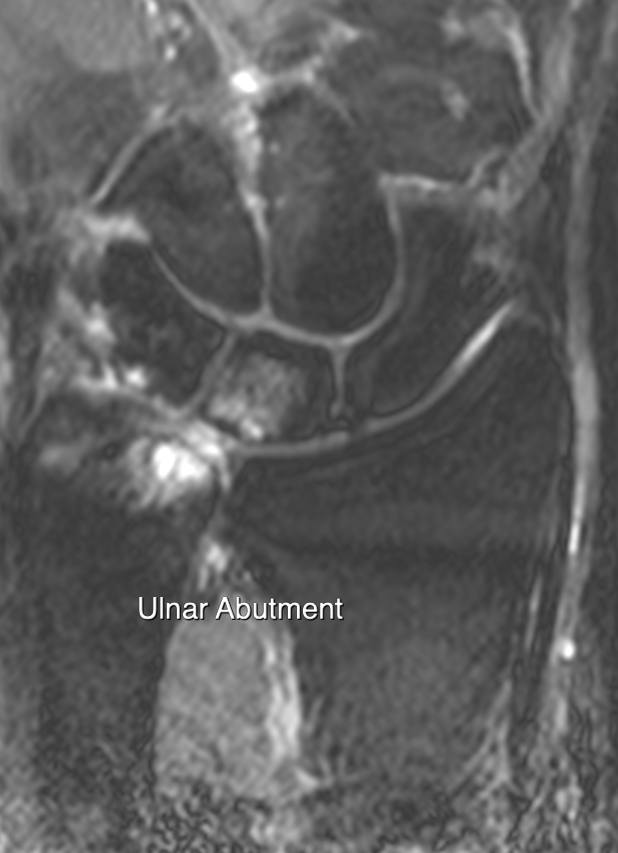The abutment syndromes form another group of potential causes of ulnar sided symptoms.
Most commonly, the abutment refers to that of the distal ulna on the lunate or adjacent triquetral.
Usually the consequence of an elongated ulna compared with the radius (positive ulnar variance).
The TFC is convex in shape as it is pushed distally
Secondary changes are present in the articular cartilage of the adjacent lunate and proximal triquetral with changes also evident in the subchondral bone.
Ulnarstyloid abutment is a variation.
In this the ulnar styloid is prominent, either congenitally or following prior injury
Secondary impingement changes are generally confined to the triquetral and do not involve the lunate.
Combinations do occur and sometimes these conditions can be difficult to differentiate between degenerative
disease of the radiocarpal joint.
Positive ulnar variance
TFC tears
Lunate chondromalacia
Cartilage loss on the distal ulnar surface
DRUJ joint effusions
Subchondral cysts
Late arthropathy
Ulnar impaction syndrome is a different entiity.
This generally arises as a result of arthropathy of the distal radioulnar joint where the articular surface of the ulna impinges against the radius.
It can be mimiced by congenital abnormalities such as
Negative ulnar variance and Madelungs deformity






